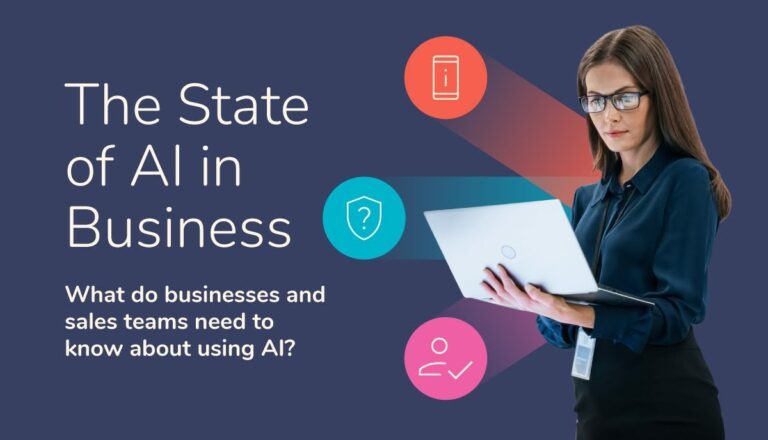How to boost sales with buyer enablement
In this blog

Buyer enablement is quickly becoming something of a buzzword.
People pay lip service to it almost as often as to sales enablement – but put into practice just as rarely.
Let’s try and pin down this slippery beast – and, more importantly, let’s provide you with a blueprint for enabling buyer enablement in your customer journeys.
We’ll start with a quick definition and go from there.
Buyer enablement definition
Buyer enablement creates and distributes content that helps your buyers seamlessly pass through each stage of their buying journey.
It does this by ensuring that everything they need is always on hand exactly when they need it.
And now we’ll lay bare exactly why buyer enablement is needed:
- 77% of buyers agree that purchasing has become very complex and difficult
- When B2B buyers are considering a purchase, they spend most of their time researching online
- Only 17% of their buying time involves conversations with suppliers. When you consider buyers talk to multiple suppliers, that means that the amount of time spent with your salesperson represents a tiny fraction of the total time spent reaching a buying decision
(Source: Gartner)
Let’s distil those stats into a statement:
Buying is stressful and difficult, partly because most research is carried out online. Content – not a sales team – is where you can make a real difference in the majority of the customer journey.
If you are not using buyer-enabled content you seem less relevant as your prospect moves from lead to opportunity.
The B2B buying journey has many stages and tasks – and these are rarely progressed through in a linear fashion.
Today’s complex buying decisions usually involve a team that contains multiple stakeholders – internal and external. Some players will enter and exit the fray, causing the need to step back in the customer journey, leap forward or remain at a stage until catch-up has occurred.
Every step of the way, whether backwards or forwards, you need to have the content required to smooth the decision-making process.
More than this, you also need to use all of your insight and marketing channels to make sure the right content is readily available for the right people at each stage of the journey.
Get buyer enabled content right and the wins are there for you: according to a recent survey, buyers who have access to enabled content are three times more likely to spend more on their chosen solution than they had originally planned to.

How to create sales enablement content
Discover how to create a sales enablement content strategy: why you need one, how to approach it and what to include.
Read morePrescriptive and practical buyer enablement
Buyer enabled content can – in broad brushstrokes – be categorised as falling into two camps:
- Prescriptive advice
This attempts to reduce stress and friction by sharing recommendations and best practices through, for example, blogs, white papers, and webinars.
- Practical tools
Usually positioned as a follow-on to advice-based content, this consists of things like tools for evaluating suppliers, ROI calculators, and checklists to ensure nothing slips between the cracks.
Content and the buying journey
It is critical that your sales enablement content and resources are mapped to your buyer’s journey.
Let’s assume that you have identified five stages in your journey that you will be producing enabled content for. Each of these stages must be clearly defined by the challenges your buyer faces and the support they will need.
Stage 1: Identifying a problem
- Here your buyer is aware of a problem – but does not have any real idea of what the solution may look like.
- Buyers will conduct research online using whitepapers and other reports.
- At this stage it is easy for your buyer to feel overwhelmed by the amount of information available and start searching out useful summaries.
(Hint, hint!) - Buyers may return to this stage later in the buying process when they have deepened their understanding of the source and scale of this problem.
(Drill down: at this later stage they will expect more detailed information about particular aspects of the problem.)
Stage 2: Exploring solutions
Here your buyer considers possible solutions.
While continuing to use online research they may also be holding in-person discussions with industry peers and suppliers.
(Speak at events, host webinars, use social groups, monitor forums.)
Customer reviews are sought at this stage and product-related marketing content is referred to.
(Time to review the strength and visibility of case studies and testimonials.)
Your buyer may also appreciate comparisons of solutions to help them understand the relative benefits.
Stage 3: Mapping out requirements
- Here your buyer starts to make sure that each solution precisely meets their requirements.
(Interactive tech specs, anyone?) - During this, formal requests, such as a request for proposal (RFP), maybe made to evaluate each solution.
- Equally likely will be an increase in the active engagement with your sales (and other) teams as requests for demos are made.
(Get sales kitted up with templates and collateral.) - At this point your content will most likely need to be tailored, if not completely personalised, as requirements will be bespoke. Typical questions include, ‘which internal and external systems can integrate?’ or ‘how will it work with our existing workflows?’
(Make sure those templates and collateral are easy to personalise.) - This is another stage that often has buyers reverting to as they assimilate a deeper understanding.
Stage 4: Selecting suppliers
- Here the shortlist comes into play.
- Now that the buying team has matched internal requirements with available solutions, they will identify a handful of possible purchases they wish to continue to explore.
(Ensure you can quickly create bespoke materials to support requests.) - The road is not yet clear – rival solutions can come to the fore and events such as employee turnover, budget cuts, or other internal issues may require a re-evaluation of available options.
(Yep, here we go again!)
Stage 5: Validating decisions and achieving consensus
- Here the various stakeholders must achieve consensus over the decision.
(You actually need to address consensus-building earlier in the process than here. Each decision-maker will need content and resources that address their particular concerns and goals.) - Once this decision has (provisionally) been made buyers will evaluate their chosen solution and place it under rigorous scrutiny. Claims are corroborated, end-user feedback collated, references taken up and influencer approval sought.
- Although this comes to the fore towards the end of the process it is, in many ways, a continual set of tasks that take place throughout the buying process.
Buyer enablement
Because prospects now conduct most of their research alone and because our sales team need marketing support in speaking to many decision-makers, buyer-enabled content is a critical part of the selling process.
Using content that is designed to answer your prospect’s needs at each stage of their buying journey is the best way to influence opinion, build trust and, yes, ensure that sale is closed.




Share